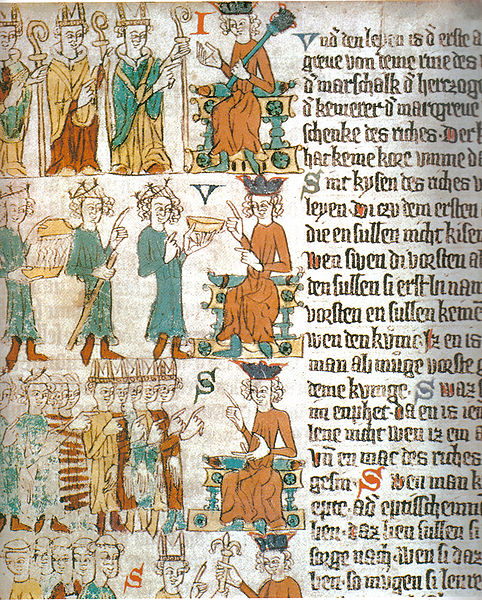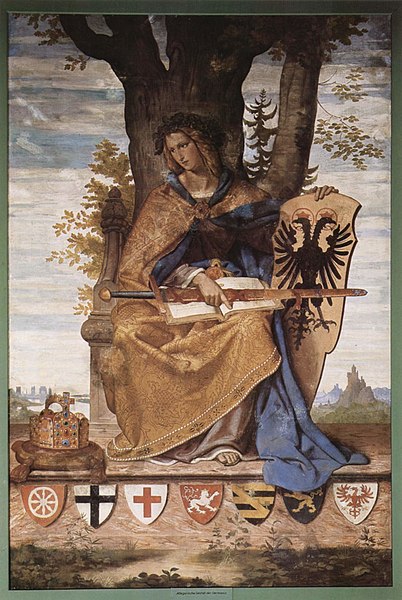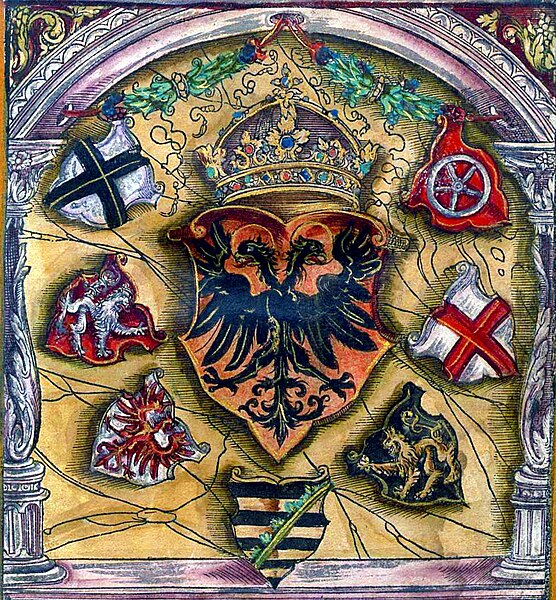The elector of Trier was one of the prince-electors of the Holy Roman Empire and, in his capacity as archbishop, administered the archdiocese of Trier. The territories of the electorate and the archdiocese were not, however, equivalent.
Baldwin in the Balduinbrunnen, Trier.
The prince-electors, pl. Kurfürsten, Czech: Kurfiřt, Latin: Princeps Elector) were the members of the electoral college that elected the ruler of the Holy Roman Empire.
The imperial prince-electors Left to right: Archbishop of Cologne, Archbishop of Mainz, Archbishop of Trier, Count Palatine, Duke of Saxony, Margrave of Brandenburg and King of Bohemia (Codex Balduini Trevirorum, c. 1340)
Choosing the king. Above: the three ecclesiastical princes choosing the king, pointing at him. Middle: the Count Palatine of the Rhine hands over a golden bowl, acting as a servant. Behind him, the Duke of Saxony with his marshal's staff and the Margrave of Brandenburg bringing a bowl of warm water, as a valet. Below, the new king in front of the great men of the empire (Heidelberg Sachsenspiegel, around 1300).
Coats of arms representing the seven original electors with the figure of Germania. Original colours were vivid. Germania's gown was gold, not beige, and the blue-grey was purple. Also, the browns were painted as vivid red and the muted grey in Saxony's arms was a brilliant green.
Coats of arms of prince electors surround the Holy Roman Emperor's; from flags book of Jacob Köbel (163#+1545). Left to right: Cologne, Bohemia, Brandenburg, Saxony, the Palatinate, Trier, Mainz





